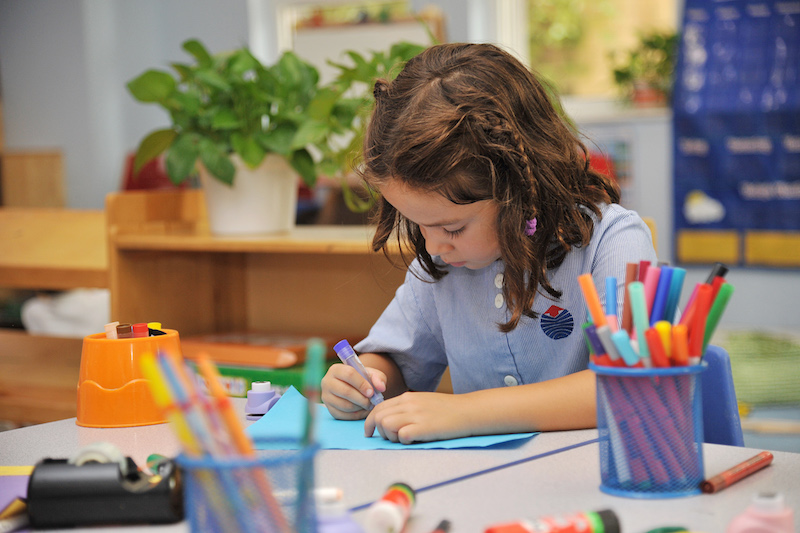Successful first steps: Tips for the transition to Kindergarten
Posted on 25th Oct 2017 in School News, International Schools, China
The move to kindergarten is one of the biggest events in the life of a child. Going from a safe and secure home environment to a new and unfamiliar setting presents many challenges for young children, faced suddenly with new authority figures and new daytime routines.
To help parents when dealing with this adjustment, Maryanne Harper, Yew Chung International School of Beijing’s Early Childhood Education (ECE) Coordinator, shares some tips on separation anxiety, the importance of routines, and why it’s important for parents to maintain open communication both with teachers and with their child during the transition process.
Overcoming Separation Anxiety
Separation anxiety is a healthy and protective emotion. It’s a child’s way of saying to their parents, “Even though you’re my safe base, I need to develop trust and confidence in alternate care-givers.”
Therefore, the first weeks of a child settling into a kindergarten classroom is a time of critical importance – it will contribute greatly to their eventual comfort in the new setting. All children are different, and while some will adjust quickly to their new environment and routines, others will take longer to feel safe and secure. Don’t be urgent to rush the process, but instead keep in mind that each child develops on a different time schedule and that the most important things for parents to do is to support their children no matter their current developmental stage.
Establish Daily Routines
Routines can help your child feel safe and secure, especially during times of change. It’s helpful, then, to set up a routine for school mornings – i.e. get up, have breakfast, brush your teeth, get dressed, put on sunscreen, pack lunchbox, and go. It’s possible to even make a chart with pictures showing the different steps of the routine and then go over the chart with your children.
Parents can also develop a consistent and predictable farewell routine in order to make it easier when leaving students at school in the morning. Some parents wave goodbye through the classroom window or make a funny goodbye face; others read a short book with their children before leaving. Transitional objects – for example a family picture, a special doll, or a favourite blanket – also work well to comfort children. One thing that’s important to remember is that most children settle in quickly after their parents leave, so parents should say goodbye only once. Too many goodbyes can be stressful both for parent and child.
Maintain Open-Communication
Open communication between teachers and parents is crucial. Teachers should share with parents the experiences that their child is having in class, while parents then reinforce their children’s classroom development and share updates and progress reports with teachers.
If your child is taking longer to settle in than hoped, discuss this with one of your child’s teachers. Together you can put into place strategies to support your child during this time.
Communication between parent and child is also an essential step of this process. Talk to your child in a positive way about any worries they may have. Staying confident, cheerful and positive yourself will make a difference in your child’s attitude. Even though you may be feeling just as anxious and emotional as your child, try to stay positive and energetic, as children will mirror your feelings.
Children’s excitement can sometimes carry them through the first few weeks of school. However, the novelty can eventually wear off, and you may notice that your child is no longer excited to go to school each day. In this situation, parents should remain positive and encouraging, which will help to rekindle their child’s enthusiasm.
Establishing a Safe Environment
The home environment is the safe base from which children can branch out and explore the world; they’re able to grow, learn, and become emotionally and socially confident when having a supportive home environment that they can return to.
For young children, getting off to a great start during the first months of kindergarten is essential because it allows them to feel that school is also a place where they can feel safe. Students should feel comfortable to take chances, to explore, to be adventurous, and to lean on teachers for direction and guidance. And with these few tips in mind, they’ll be up and running in no time!